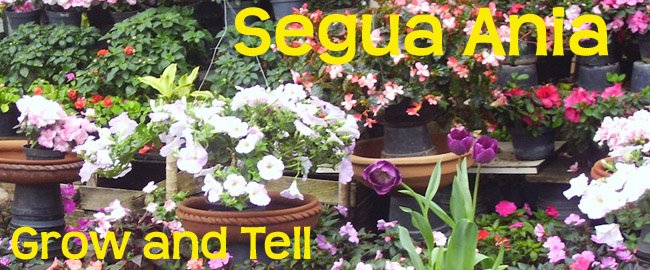Olla Update
I found a pottery shop that will teach me how to make pottery. It may seem boring to other people but, at least for now, my goal is to make ollas for watering. Ollas, if you don't know, are terracotta jars that you bury next to your plants and fill with water. The plants then "take" the water from the porous terracotta as they need it. Classes are $15 each and the whole course takes 10 classes. Not bad for a neat skill that will last a lifetime, and one that I could pass down to my boys.
Rant #1 - India's green revolution disillution
I've been following the story about the farmers in Punjab, India. Apparently, the Indian government encouraged, via subsidies, the adoption of modern farming methods, you know, chemical pesticides and fertilizers, high yield crops, modern machinery, and now, the Indian farmers are running into familiar problems (familiar to the West that is).
First, the water table is falling by about 3 feet per year. High yield crops require high amounts of water.
Second, the land requires 3 times as much fertilizer as before. No big surprise there.
Third, the crops require more and more pesticides every year. Yeah, heard about that one too.
Last, because the Indian farmers are having to drill deeper each year to get ground water for the crops, they are now hitting brackish water and thus are killing their plants with the salt.
Now, I am not so naive as to believe that we can do away with modern farming practices overnight. For all my love of organic, local gardening, I know that the majority of the people do not grow vegetables (even if new gardeners are popping up in record numbers) and to sustain our current population, we need big agriculture. This doesn't mean however, that we just accept the status quo and bury our head in the sand (do Ostriches really do that?).
I read somewhere that our current situation can be traced back to the moment Fritz Haber successfully synthesized Ammonia with Nitrogen from the air and thus ushered the modern era of chemical fertilizers (later he was instrumental in the development of Zyclon B, and was a defender of the use of poison gas as a weapon). Prior to that, fertilizing relied on guano from South America and other natural sources, such as Nitrite salts. Because there was only so much guano, we could only grow so much and thus, we had a natural check on population growth, meaning that if more people came about than we could sustain, they would simply starve (aka, Malthusian Catastrophe).
Now we are hooked on Big Ag and Big Chem with the results we see now: pollution of our water supplies and exhaustion of our water supplies, not too mentions others such as the diminished nutritional value of our crops and the increse in diseases due to the pollutants in our food.
I live in Kansas and every year, I see less and less farms around here, which tells me that someone else is growing our food and I am afraid that those people are in it strictly for the money and are not really looking out for my best interests.
We need to turn this around but I am afraid it won't be easy. I do have hopes though, because I know the inventiveness of man but we have to start by recognizing that there is a problem.
Rant #2 - lawns
The more I gardened, the more I began to see my lawn as a waste of space. Then I started reading Second Nature, by Michael Pollan and now I know that not only are lawns a waste of space, but also that they are a BIG source of pollution and water waste.
I spoke with my wife about this and she now agrees that we must do something about our front lawn. I've seen other people's lawns around here that use stone and flower beds instead of grass.
That may be the way we go.
Subscribe to:
Post Comments (Atom)


Even if you don't replace your lawn, I encourage you to dig up part of it and make a nice big (terraced if necessary) flower bed out of it.
ReplyDeleteI dug up about 200 sq ft of our 1000 sq ft front lawn, and put a six inch high raised bed in, which I filled with garden mix soil delivered from a nursery. Our yard is mostly clay, and has a VERY low absorption rate despite two years of amending the soil, aerating, and attempting to increase it's ability to retain water and allow increased root penetration. Just like the Ollas, the 5 cubic feet of soil in the raised bed will retain water from rains and watering and then distribute it to the lawn as the lawn dries. I make sure that I thoroughly soak the raised bed once a week and I've found that it easily feeds the rest of the lawn with minimal watering.
Very sad to hear about Indian farmers.... It boils down onto sustainability!!!...... a balanced, matured and well thought approach especially when we meddle with nature. cheers! ... ~ bangchik at blotanical.
ReplyDeleteKarl,
ReplyDeleteInteresting about the flower bed. There seems to be as many ways to water responsibly as there are gardens!
Bangchik and Kakdah,
Sustainability is the key, you are right.